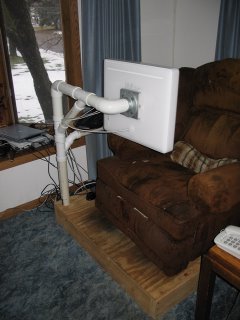February 2006
Virtual Machine
| wednesday, 22 february 2006 18:00 |
Analog Computer
18/02/06 18:00 Filed in: Computer | Technology
| saturday, 18 february 2006 18:00 |
Summary of Computers Used
14/02/06 18:00 Filed in: Computer
| tuesday, 14 february 2006 18:00 |
| What I hope to add to this blog in the future is a little info about computers that I have used in the past. The following is just a list of what I can remember now though I will update the list if I remember more. They are in chronological order:
Wolverine adding machine
Post slide rule
Analog computer
IBM System 360 - card reader
GE Timeshare TeleType - paper tape
DEC PDP 8/e
HP 35, 45, 25 calculators
IBM System 370
General Automation SPC16
Computervision
Control Data 6600, 7600
Apple IIe
TI99/4 home computer
Commodore 64
IBM TSO/CMS
VAX 780
Apollo
Control Data 830
IBM PC - DOS
DEC Rainbow PC - CP/M
Apple Lisa
Mac XL
Mac 512, Plus, SE, SE30, IIci
Compaq PC - Win3.1
iMac
HP Unix workstation
Toshiba laptop - Win98
Compaq, Dell - Windows 2000
Sun workstation - Solaris
Power Mac G4, G5 - OSX
Virtual PC - Windows XP
eMac, iBook
iMac G5 |
iMac G5 VESA Stand
11/02/06 18:00 Filed in: Computer
| saturday, 11 february 2006 18:00 |
